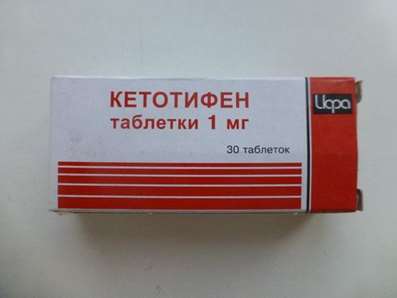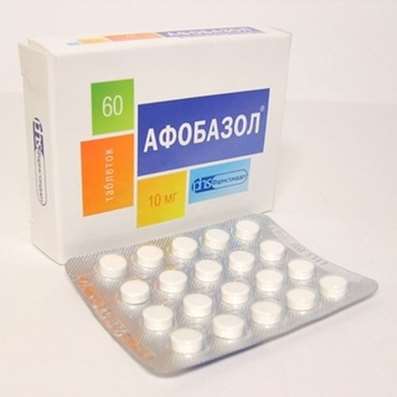Instruction for use: Erica-35
I want this, give me price
Active substance: Cyproterone + Ethinylestradiol
Indications
Contraception in women with androgenization phenomena; Treatment of androgen-dependent diseases in women - mild acne (acne), especially common forms and forms, accompanied by seborrhea, inflammation or the formation of papular-pustular or nodular-cystic acne; Androgenetic alopecia and mild forms of hirsutism.
Contraindications
Thrombosis (venous and arterial) and thromboembolism at present or in the anamnesis (including deep vein thrombosis, pulmonary embolism, myocardial infarction, cerebrovascular disorders); Conditions preceding thrombosis (including transient ischemic attacks, angina pectoris) at present or in the anamnesis; A predisposed predisposition to venous or arterial thrombosis, including resistance to activated protein C, an antithrombin III deficiency, protein C deficiency, protein S deficiency, hyperhomocysteinemia, antibodies to phospholipids (antibodies to cardiolipin, lupus anticoagulant); Migraine with focal neurologic symptoms in history; Diabetes mellitus with diabetic angiopathy; Multiple or expressed risk factors for venous thrombosis or arterial thrombosis, incl. Diseases of blood vessels of the brain or coronary arteries, uncontrolled arterial hypertension; Complicated cardiac valve disease, pulmonary hypertension, atrial fibrillation, subacute bacterial endocarditis, extensive surgery with prolonged immobilization, extensive trauma, obesity (BMI> 30); Pancreatitis with severe hypertriglyceridemia at present or in the anamnesis; Severe liver disease (before the normalization of indicators of functional liver tests and within 3 months after the return of these indicators in the norm); Liver tumors (benign or malignant) at present or in the anamnesis; Identified hormone-dependent malignant diseases (including genitals or mammary glands) or suspected of them; Bleeding from the vagina of unknown origin; Pregnancy or suspicion of it; The period of breastfeeding; Hypersensitivity; Smoking at the age of 35 years and over; Deficiency of lactase, lactose intolerance, glucose-galactose malabsorption.
pregnancy and lactation
The combination of cyproterone + ethinylestradiol is contraindicated during pregnancy and during breastfeeding. If pregnancy is detected during the administration of a combination of cyproterone + ethinyl estradiol, this combination should be immediately discontinued.
Ciproterone acetate penetrates into breast milk, so the use of a combination of cyproterone + ethinyl estradiol is contraindicated during breastfeeding.
Side effects
Side effects are grouped according to the frequency of occurrence as follows: often (≥1 / 100); Infrequently (≥1 / 1000 and <1/100) and rarely (<1/1000).
From the side of the organ of vision: rarely - intolerance of contact lenses.
From the digestive tract: often - nausea, pain in the abdomen; Infrequently - vomiting, diarrhea.
From the immune system: rarely - hypersensitivity reactions.
From the side of metabolism: often - weight gain; Infrequently - fluid retention; Rarely - weight loss.
From the nervous system: often - headache; Infrequently - a migraine.
Mental disturbance: often - decrease and mood swings; Infrequently - decreased libido; Rarely - increased libido.
On the part of the reproductive system and mammary glands: often - pain / engorgement in the mammary glands, bleeding / spotting from the vagina (first 3 cycles of use); Infrequently - enlargement of mammary glands; Rarely - discharge from the vagina, nipples of the mammary glands.
From the skin and subcutaneous tissues: infrequently - rash, hives; Rarely erythema nodosum, erythema multiforme.
Against the background of the use of COCs (including the combination of cyproterone + ethinyl estradiol), side effects such as thrombosis or thromboembolism (including myocardial infarction, stroke, deep vein thrombosis, pulmonary embolism, thromboembolism of the hepatic, mesenteric, renal arteries and veins, Arteries of the retina); arterial hypertension; Impaired vision; dizziness; Pancreatitis; cholecystitis; Hyperglyceridemia; Violation of glucose tolerance; Impaired liver function; Crohn's disease and ulcerative colitis; Hormone-dependent tumors; Liver tumors (benign and malignant); Chloasma (especially if there is a history of chloasma in pregnancy); Acyclic spotting, more often in the first months of use; Occurrence or exacerbation of jaundice and / or itching associated with cholestasis; Cholelithiasis; Porphyria; Systemic lupus erythematosus; Hemolytic-uremic syndrome; chorea; Herpes during pregnancy; Hearing loss due to otosclerosis; cervical cancer; Increased symptoms of hereditary angioedema.
Precautionary measures
Medical checkup. Prior to the appointment (including repeated) of the combination of cyproterone + ethinyl estradiol, you need to familiarize yourself with the history of life, the family history of the woman, and conduct a thorough general medical (including measurement of blood pressure, heart rate, BMI definition) and gynecological examination, incl. Examination of mammary glands and cytological examination of scraping from the cervix (a test for Pap test), exclude pregnancy. In addition, violations of the blood coagulation system should be avoided. The volume of additional studies and the frequency of follow-up visits are determined individually. Usually, follow-up examinations should be conducted at least once every 6 months.
A woman should be informed that the combination of cyproterone + ethinyl estradiol does not protect against HIV infection and other sexually transmitted diseases.
If hirsutism occurred recently in a woman and is largely expressed, a differential diagnosis should be made to identify the possible cause of the disease (androgen-producing tumor, adrenal enzyme deficiency). If any of the conditions, diseases and risk factors identified below are present, careful consideration should be given to the potential risk and expected benefit of using COCs in each individual case and to discuss it with a woman before she decides to start taking a combination of cyproterone + Ethinylestradiol. With weighting, strengthening or the first manifestation of risk factors, the combination of cyproterone + ethinyl estradiol may be required.
CCC diseases. There is evidence of an increase in the incidence of venous and arterial thrombosis and thromboembolism (such as deep vein thrombosis, PE, myocardial infarction, stroke) with COCs.
The risk of venous and arterial thromboembolic complications is highest in the first year of COC use. An increased risk is present after the initial use of COCs or the resumption of the use of the same or different COCs (after a break between doses of 4 weeks or more). Data from a large prospective study with 3 groups of women showed that an increased risk of venous and arterial thromboembolic complications is present mainly during the first 3 months of COC use.
The overall risk of venous and arterial thromboembolic complications in women taking low-dose COCs (<50 mcg ethinylestradiol) is 2-3 times higher than in women who do not take COC and are not pregnant and it remains lower in comparison with the risk of thromboembolic complications During pregnancy and childbirth.
Very rarely VTE can lead to incapacity or death. Thromboembolic complications can occur with any COCs.
Very rarely, when using COCs, there is a thrombosis of other blood vessels, for example veins or arteries of the liver, brain or retina, mesenteric, renal vessels. There is no single point of view regarding the relationship between the occurrence of these events and the use of COCs.
Symptoms of deep vein thrombosis include edema of the lower limb or along the vein on the lower limb, pain or tenderness in the lower limb only when standing or walking, sensation of heat in the lower extremity, redness, or discoloration of the skin of the lower limb.
Symptoms of PE include sudden dyspnea or rapid breathing; Sudden cough, incl. With hemoptysis; Acute pain in the chest, which can intensify with a deep inspiration; sense of anxiety; Severe dizziness; cardiopalmus; Disturbance of the heart rhythm.
Arterial thromboembolism can lead to stroke, vascular occlusion or myocardial infarction. Symptoms of stroke - sudden weakness or loss of sensitivity of the face, limbs, especially on the one hand; Sudden confusion; Disorientation and dysarthria; Sudden full or partial loss of vision; Sudden gait disturbance; dizziness; Loss of coordination of movements; Sudden severe or prolonged headache for no apparent reason; Loss of consciousness or fainting with or without an epileptic fit.
Other signs of vascular occlusion are sudden pain, swelling and mild blueing of the extremities, an acute abdomen.
Symptoms of myocardial infarction are pain, discomfort, feeling of heaviness, contraction or raspiraniya in the chest, arm or behind the breastbone; Discomfort with irradiation in the back, lower jaw, larynx, hand, stomach; cold sweat; nausea, vomiting; dizziness; Strong weakness; sense of anxiety; dyspnea; cardiopalmus; Disturbance of the heart rhythm.
Arterial thromboembolism can be fatal.
The risk of thrombosis (venous and / or arterial) and thromboembolism increases with age; For women smokers (with an increase in the number of cigarettes or age, the risk is further increased, especially in women over 35); If there is a family history (ie VTE or arterial thromboembolism in close relatives or parents at a relatively young age, in the case of hereditary predisposition, the woman should be examined by the appropriate specialist to decide on the possibility of taking COCs); With obesity (BMI ≥30 kg / m); Prolonged immobilization, serious surgical interventions, any operation on the lower extremities or extensive trauma (in these situations, it is necessary to stop the use of COCs (in the case of a planned operation at least 4 weeks before it) and not resume reception for 2 weeks after immobilization); With dyslipoproteinemia, arterial hypertension, migraine, heart valve diseases, atrial fibrillation.
The question of the possible role of varicose veins and superficial thrombophlebitis in the development of VTE remains controversial.
An increased risk of thromboembolism in the postpartum period should be considered.
Violations of peripheral circulation can also occur in diabetes mellitus, systemic lupus erythematosus, hemolytic-uremic syndrome, chronic inflammatory bowel diseases (Crohn's disease or ulcerative colitis) and sickle cell anemia.
An increase in the frequency and severity of migraine attacks during the use of COCs (which may precede cerebrovascular disorders) should be grounds for the immediate cessation of their use.
Biochemical indices indicating hereditary or acquired predisposition to venous or arterial thrombosis include resistance to activated protein C, hyperhomocysteinemia, insufficiency of antithrombin III, deficiency of protein C, deficiency of protein S, presence of antibodies to phospholipids (antibodies to cardiolipin, lupus anticoagulant).
In assessing the relationship between risk and benefit, it should be borne in mind that adequate treatment of the relevant condition can reduce the risk of thrombosis associated with it. It should also be taken into account that the risk of thrombosis and thromboembolism in pregnancy is higher than when taking low-dose oral contraceptives (<50 mcg ethinyl estradiol).
Tumors.
There are reports of a slight increase in the risk of developing cervical cancer with prolonged use of COCs. However, the connection with the use of COCs has not been proven. Controversy remains as to the extent to which these data are associated with cervical pathology or features of sexual behavior (a more rare use of barrier methods of contraception). The most significant risk factor for developing cervical cancer is persistent papillomavirus infection.
A meta-analysis of 54 epidemiological studies showed that there is a slightly increased relative risk of developing breast cancer diagnosed in women taking COC (relative risk 1.24). Increased risk gradually disappears within 10 years after discontinuation of COCs. Due to the fact that breast cancer is rarely seen in women under 40 years of age, the increase in the number of breast cancer diagnoses in women who are currently taking COCs or who have recently taken COC is insignificant in relation to the overall risk of this disease. The relationship between the development of breast cancer and the use of COC has not been proven. The observed increase in risk may also be due to careful follow-up and earlier diagnosis of breast cancer in women using COCs. Women who have ever used COC have earlier stages of breast cancer than women who have never used COCs.
In rare cases, with the use of COC, the development of benign, and in very rare cases, malignant liver tumors, which in some cases led to life-threatening intraabdominal bleeding. This should be taken into account when making a differential diagnosis in the event of severe pain in the abdomen, liver enlargement, or signs of intra-abdominal bleeding.
Other states. In women with hypertriglyceridemia (or in the presence of this condition in a family history), there may be an increased risk of developing pancreatitis with COCs. Despite the fact that a small increase in blood pressure was described in many women taking COC, a clinically significant increase in blood pressure was noted rarely. Nevertheless, if a persistent, clinically significant increase in blood pressure develops during the administration of COC, COC should be discontinued and the treatment of hypertension commenced. The use of COCs can be continued if normal blood pressure values are achieved with antihypertensive therapy.
There are reports of the development or deterioration of the following conditions, both during pregnancy and COC use, but their relationship with the use of COC is not proven - jaundice and / or pruritus associated with cholestasis; Cholelithiasis; Porphyria; Systemic lupus erythematosus; Hemolytic-uremic syndrome; chorea; Herpes during pregnancy; Hearing loss associated with otosclerosis. Also, cases of Crohn's disease and ulcerative colitis are described in the background of the use of COCs.
In women with hereditary forms of angioedema, exogenous estrogens can cause or worsen symptoms of angioedema.
When using the combination of cyproterone + ethinyl estradiol, the development of chloasma is possible, especially in women with a history of previous history of chloasma. Women with a tendency to chloasma while taking COC should avoid prolonged exposure to sunlight and exposure to UV radiation.
In acute or chronic violations of liver function, it may be necessary to abolish the combination of cyproterone + ethinyl estradiol before the return of liver function to normal.
The recurrence of cholestatic jaundice, which developed for the first time in pregnancy or previous reception of sex hormones, requires the cessation of COC use.
Although COCs may have an effect on insulin resistance and glucose tolerance, there is no need to change the therapeutic regimen in diabetic patients using low-dose COCs (<50 μg ethinylestradiol). Nevertheless, women with diabetes require careful monitoring of blood glucose concentrations during the application of a combination of cyproterone + ethinyl estradiol.
The effectiveness of COCs can be reduced by admission, gastrointestinal disorders or as a result of drug interactions.
Influence on the menstrual cycle. Against the background of the use of COC, irregular (acyclic) bleeding (spotting bleeding or breakthrough bleeding) can occur, especially during the first months of use. Therefore, any irregular bleeding should be assessed only after an adaptation period of approximately 3 cycles.
If irregular bleeding recurs or develops after previous regular cycles, a thorough examination should be performed to exclude malignant neoplasms or pregnancy.
Some women during the interruption of the use of a combination of cyproterone + ethinyl estradiol may not develop withdrawal bleeding. If the COC was administered in accordance with the directions, pregnancy is unlikely. Nevertheless, if before the reception of the COC was performed irregularly or there are no consecutive two bleeding cancellations, pregnancy should be excluded before continuing the combination of cyproterone + ethinylestradiol.
Impact on the indicators of laboratory tests. Admission COC can affect the results of some laboratory tests, including indicators of liver function, kidney function, thyroid gland, adrenal gland, transport protein content in plasma, carbohydrate metabolism, coagulation and fibrinolysis parameters. Changes usually do not go beyond the limits of normal values.
Impact on the ability to manage vehicles and mechanisms. The effect of the combination of cyproterone + ethinyl estradiol on the ability to drive vehicles and mechanisms has not been revealed.

 Cart
Cart





